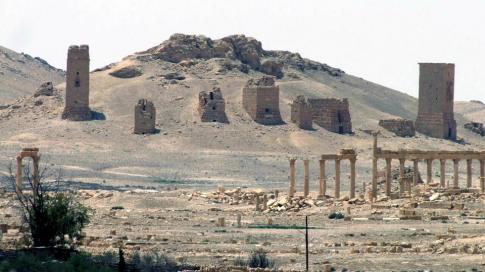* * *

Satellite pictures have confirmed what many have feared – the destruction of yet another Roman-era temple in Palmyra, Syria.
Heba Saleh in Cairo
Militants from the Islamic State in Iraq and Syria have destroyed the main building of the ancient temple of Baal in the Syrian town of Palmyra.
Satellite imagery released by the UN shows a flattened area where the temple once stood. The image was taken the day after local people reported an explosion near the temple in the 2,000-year-old Greco-Roman complex, which came under Isis control in May.
Einar Bjorgo, manager of Unosat, UN satellite analysis centre in Geneva, said the image taken on Monday “shows the destruction of the temple’s main building as well as a row of columns in its immediate vicinity”.
There had been conflicting reports about the fate of one of the world’s most famous archaeological sites on Monday. An Isis militant told the Associated Press that explosives had been detonated near the temple of Baal but gave no information on the extent of the damage.
Syrian antiquities officials in Damascus said residents of the modern city, known to most Syrians by its Arabic name Tadmur, were unable to approach the site to assess the damage. Local people reported that the militants had booby-trapped the site, according to the official Syrian news agency.
The temple of Baal, dedicated to a Semitic god and consecrated in 32AD, was the centre of religious life in the ancient city. Isis last week blew up the smaller temple of Baalshamin, one of the best-preserved monuments in Syria, which also stood in the complex. The group released pictures of the destruction to worldwide condemnation. Unesco condemned the act as a war crime.
Syria map
Last month the group beheaded Khaled al-Asaad, the 83-year-old director of research at Palmyra who had spent a 40-year career overseeing the archeological treasures at the site.
Isis adheres to a strict interpretation of Islam which considers ancient temples and statues idolatrous. The group has destroyed similar ancient sites in Iraq and raises money by looting archaeological sites and trading in ancient artefacts.
Palmyra, known for its avenue of Roman columns rising from the sands of the Syrian Desert, was a cultural crossroads of the ancient world. A strategic oasis on an east-west trade route, it linked the civilisations of India, China and Persia with the Roman empire.
Copyright The Financial Times Limited 2015




 del.icio.us
del.icio.us Digg
Digg

Post your comment